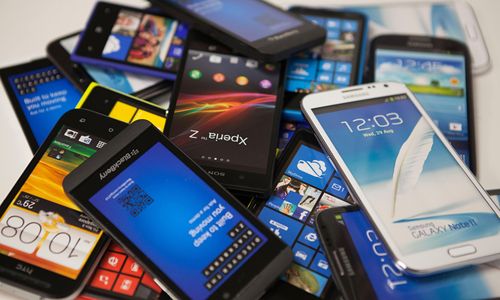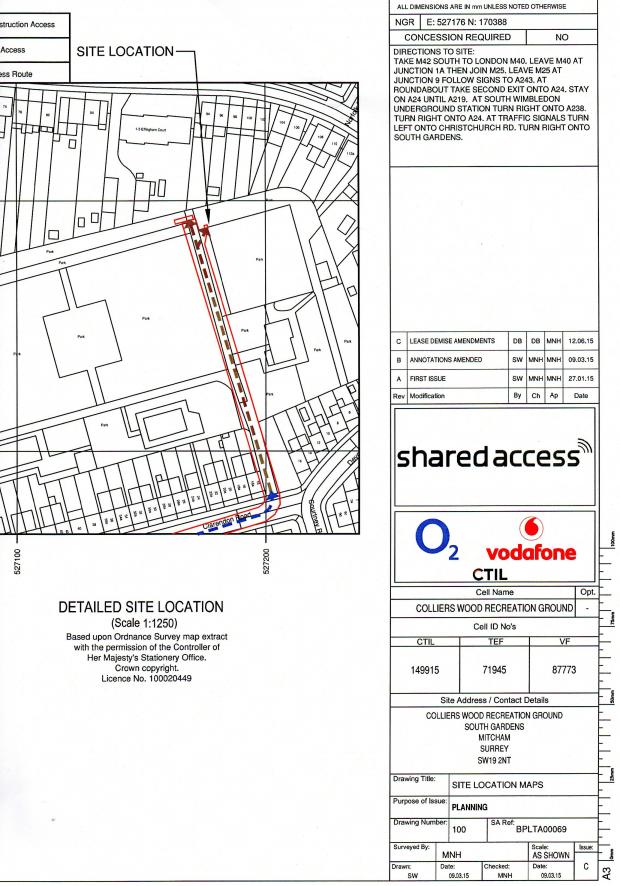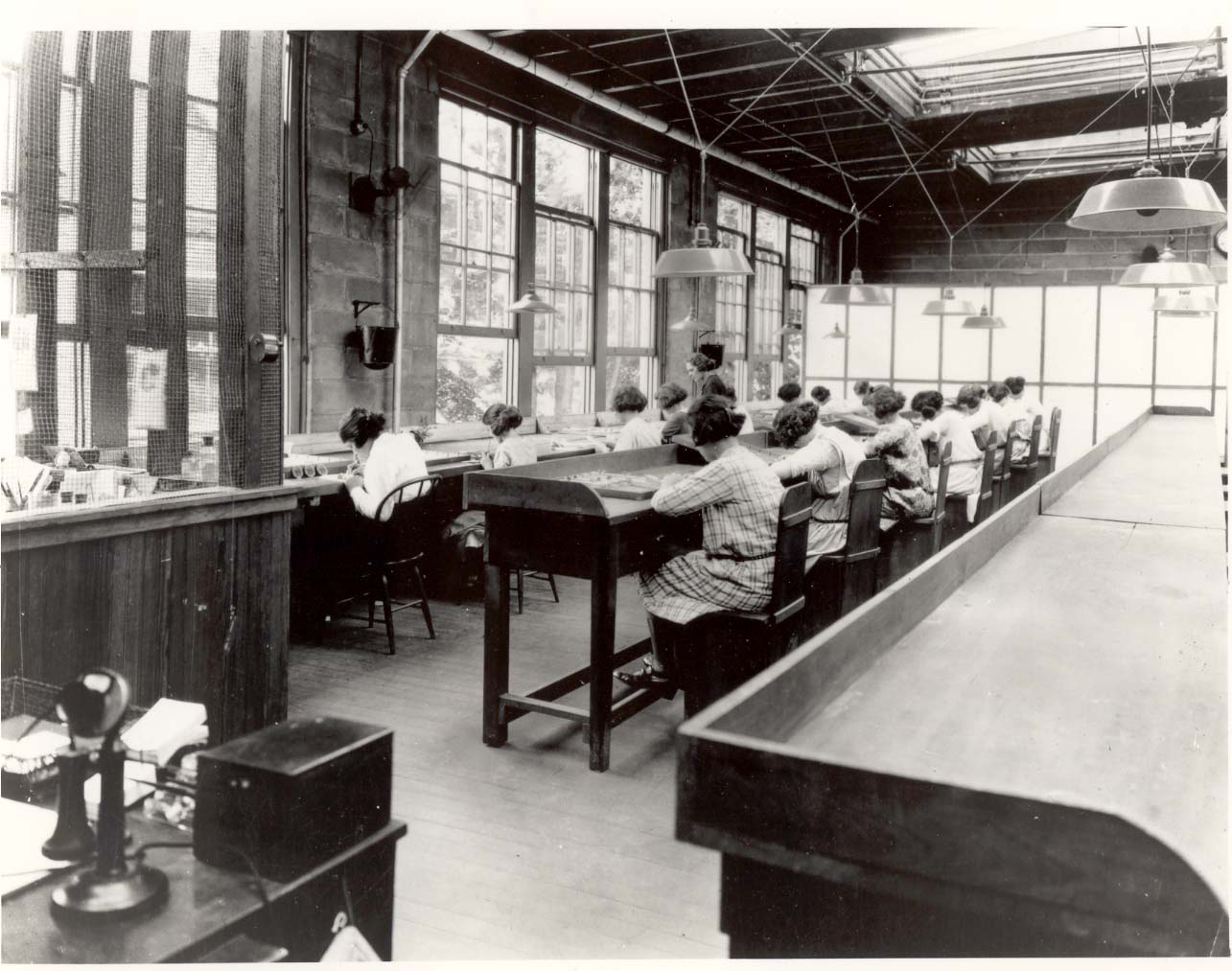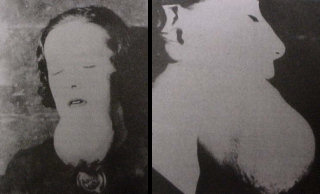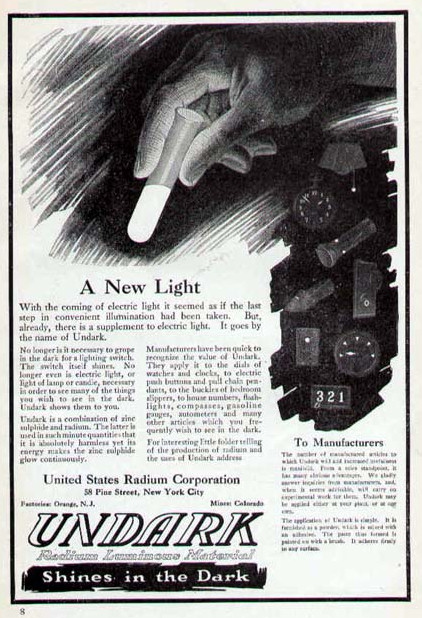[Appello internazionale di oltre 200 scienziati di 40 nazioni al Segretario Generale dell’ONU Ban Ki-moon, per chiedere protezione dalla esposizione ai Campi Elettromagnetici, soprattutto quelli in Alta Frequenza generati dalle Radiofrequenze/Microonde emesse dai dispositivi Wireless (vd. telefoni cellulari e cordless, Stazioni Radio Base della telefonia mobile, Wi-Fi, antenne radio-televisive, smart meter, baby monitor, ecc.), ma anche quelli in Frequenza Estremamente Bassa generati dalle apparecchiature elettriche e dagli apparati utilizzati per il trasporto della corrente elettrica (vd. tralicci dell’alta tensione).
La versione in Italiano segue quella in lingua originale.]
International EMF Scientist Appeal
To: His Excellency Ban Ki-moon, Secretary-General of the United Nations; Honorable Dr. Margaret Chan, Director-General of the World Health Organization; Honorable Achim Steiner, Executive Director of the U.N. Environmental Programme; U.N. Member Nations
International Appeal
Scientists call for Protection from Non-ionizing Electromagnetic Field Exposure
We are scientists engaged in the study of biological and health effects of non-ionizing electromagnetic fields (EMF). Based upon peer-reviewed, published research, we have serious concerns regarding the ubiquitous and increasing exposure to EMF generated by electric and wireless devices. These include–but are not limited to–radiofrequency radiation (RFR) emitting devices, such as cellular and cordless phones and their base stations, Wi-Fi, broadcast antennas, smart meters, and baby monitors as well as electric devices and infra-structures used in the delivery of electricity that generate extremely-low frequency electromagnetic field (ELF EMF).
Scientific basis for our common concerns
Numerous recent scientific publications have shown that EMF affects living organisms at levels well below most international and national guidelines. Effects include increased cancer risk, cellular stress, increase in harmful free radicals, genetic damages, structural and functional changes of the reproductive system, learning and memory deficits, neurological disorders, and negative impacts on general well-being in humans. Damage goes well beyond the human race, as there is growing evidence of harmful effects to both plant and animal life.
These findings justify our appeal to the United Nations (UN) and, all member States in the world, to encourage the World Health Organization (WHO) to exert strong leadership in fostering the development of more protective EMF guidelines, encouraging precautionary measures, and educating the public about health risks, particularly risk to children and fetal development. By not taking action, the WHO is failing to fulfill its role as the preeminent international public health agency.
Inadequate non-ionizing EMF international guidelines
The various agencies setting safety standards have failed to impose sufficient guidelines to protect the general public, particularly children who are more vulnerable to the effects of EMF.
The International Commission on Non-Ionizing Radiation Protection (ICNIRP) established in 1998 the “Guidelines For Limiting Exposure To Time-Varying Electric, Magnetic, and Electromagnetic Fields (up to 300 GHz)”[1]. These guidelines are accepted by the WHO and numerous countries around the world. The WHO is calling for all nations to adopt the ICNIRP guidelines to encourage international harmonization of standards. In 2009, the ICNIRP released a statement saying that it was reaffirming its 1998 guidelines, as in their opinion, the scientific literature published since that time “has provided no evidence of any adverse effects below the basic restrictions and does not necessitate an immediate revision of its guidance on limiting exposure to high frequency electromagnetic fields[2]. ICNIRP continues to the present day to make these assertions, in spite of growing scientific evidence to the contrary. It is our opinion that, because the ICNIRP guidelines do not cover long-term exposure and low-intensity effects, they are insufficient to protect public health.
The WHO adopted the International Agency for Research on Cancer (IARC) classification of extremely low frequency electromagnetic field (ELF EMF) in 2002[3] and radiofrequency radiation (RFR) in 2011[4]. This classification states that EMF is a possible human carcinogen (Group 2B). Despite both IARC findings, the WHO continues to maintain that there is insufficient evidence to justify lowering these quantitative exposure limits.
Since there is controversy about a rationale for setting standards to avoid adverse health effects, we recommend that the United Nations Environmental Programme (UNEP) convene and fund an independent multidisciplinary committee to explore the pros and cons of alternatives to current practices that could substantially lower human exposures to RF and ELF fields. The deliberations of this group should be conducted in a transparent and impartial way. Although it is essential that industry be involved and cooperate in this process, industry should not be allowed to bias its processes or conclusions. This group should provide their analysis to the UN and the WHO to guide precautionary action.
Collectively we also request that:
- children and pregnant women be protected;
- guidelines and regulatory standards be strengthened;
- manufacturers be encouraged to develop safer technology;
- utilities responsible for the generation, transmission, distribution, and monitoring of electricity maintain adequate power quality and ensure proper electrical wiring to minimize harmful ground current;
- the public be fully informed about the potential health risks from electromagnetic energy and taught harm reduction strategies;
- medical professionals be educated about the biological effects of electromagnetic energy and be provided training on treatment of patients with electromagnetic sensitivity;
- governments fund training and research on electromagnetic fields and health that is independent of industry and mandate industry cooperation with researchers;
- media disclose experts’ financial relationships with industry when citing their opinions regarding health and safety aspects of EMF-emitting technologies; and
- white-zones (radiation-free areas) be established.
1) http://www.icnirp.org/cms/upload/publications/ICNIRPemfgdl.pdf
2) http://www.icnirp.org/cms/upload/publications/ICNIRPStatementEMF.pdf
3) http://monographs.iarc.fr/ENG/Monographs/vol80/
4) http://monographs.iarc.fr/ENG/Monographs/vol102/
Release date: May 11, 2015
This version’s date: October 15, 2015.
All inquiries, including those from qualified scientists who request that their name be added to the Appeal, may be made by contacting Elizabeth Kelley, M.A., Director, EMFscientist.org, at info@EMFscientist.org.
Note: the signatories to this appeal have signed as individuals, giving their professional affiliations, but this does not necessarily mean that this represents the views of their employers or the professional organizations they are affiliated with.
Signatories
Armenia
Prof. Sinerik Ayrapetyan, Ph.D., UNESCO Chair – Life Sciences International Postgraduate Educational Center, Armenia
Australia
Dr. Priyanka Bandara, Ph.D., Independent Environmental Health Educator/Researcher, Australia; Advisor, Environmental Health Trust and Doctors for Safer Schools
Dr. Bruce Hocking, MD, MBBS, FAFOEM (RACP), FRACGP, FARPS, specialist in occupational medicine; Victoria, Australia
Dr. Gautam (Vini) Khurana, Ph.D., F.R.A.C.S., Director, C.N.S. Neurosurgery, Australia
Dr. Don Maisch, Ph.D., Australia
Dr. Elena Pirogova, Ph.D., Biomed Eng., B. Eng (Hon) Chem. Eng., Engineering & Health College; RMIT University, Australia
Dr.Mary Redmayne, Ph.D., Department of Epidemiology & Preventive Medicine, Monash University, Australia
Dr. Charles Teo, BM, BS, MBBS, Member of the Order of Australia,Director, Centre for Minimally Invasive Neurosurgery at Prince of Wales Hospital, NSW, Australia
Austria
Dr. Michael Kundi, MD, University of Vienna, Austria
Dr. Gerd Oberfeld, MD, Public Health Department, Salzburg Government, Austria
Dr. Bernhard Pollner, MD, Pollner Research, Austria
Prof. Dr. Hugo W. Rüdiger, MD, Austria
Bahrain
Dr. Amer Kamal, MD, Physiology Department, College of Medicine, Arabian Gulf University, Bahrain
Belgium
Prof. Marie-Claire Cammaerts, Ph.D., Free University of Brussels, Faculty of Science, Brussels, Belgium
Brazil
Vânia Araújo Condessa, MSc., Electrical Engineer, Belo Horizonte, Brazil
Prof. Dr. João Eduardo de Araujo, MD, University of Sao Paulo, Brazil
Dr.Francisco de Assis Ferreira Tejo, D. Sc., Universidade Federal de Campina Grande, Campina Grande, State of Paraíba, Brazil
Prof. Alvaro deSalles, Ph.D., Federal University of Rio Grande Del Sol, Brazil
Prof. Adilza Dode, Ph.D., MSc. Engineering Sciences, Minas Methodist University, Brazil
Dr.Daiana Condessa Dode, MD, Federal University of Medicine, Brazil
Michael Condessa Dode, Systems Analyst, MRE Engenharia Ltda, Belo Horizonte, Brazil
Prof. Orlando Furtado Vieira Filho, PhD, Cellular&Molecular Biology, Federal University of Rio Grande do Sul, Brazil
Canada
Dr. Magda Havas, Ph.D., Environmental and Resource Studies, Centre for Health Studies, Trent University, Canada
Dr. Paul Héroux, Ph.D., Director, Occupational Health Program, McGill University; InvitroPlus Labs, Royal Victoria Hospital, McGill University, Canada
Dr. Tom Hutchinson, Ph.D., Professor Emeritus, Environmental and Resource Studies, Trent University, Canada
Prof. Ying Li, Ph.D., InVitroPlus Labs, Dept. of Surgery, Royal Victoria Hospital, McGill University, Canada
James McKay M.Sc, Ecologist, City of London; Planning Services, Environmental and Parks Planning, London, Canada
Dr. Anthony B. Miller, MD, FRCP, Professor Emeritus, Dalla Lana School of Public Health, University of Toronto, Canada
Prof. Klaus-Peter Ossenkopp, Ph.D., Department of Psychology (Neuroscience), University of Western Ontario, Canada
Dr. Malcolm Paterson, Ph.D. Molecular Oncologist (ret.), British Columbia, Canada
Prof. Michael A. Persinger, Ph.D., Behavioural Neuroscience and Biomolecular Sciences, Laurentian University, Canada
China
Prof. Huai Chiang, Bioelectromagnetics Key Laboratory, Zhejiang University School of Medicine, China
Prof. Yuqing Duan, Ph.D., Food & Bioengineering, Jiangsu University, China
Dr.Kaijun Liu, Ph.D., Third Military Medical University, Chongqing, China
Prof. Xiaodong Liu, Director, Key Lab of Radiation Biology, Ministry of Health of China; Associate Dean, School of Public Health, Jilin University, China
Prof. Wenjun Sun, Ph.D., Bioelectromagnetics Key Lab, Zhejiang University School of Medicine, China
Prof. Minglian Wang, Ph.D., College of Life Science & Bioengineering, Beijing University of Technology, China
Prof. Qun Wang, Ph.D., College of Materials Science & Engineering, Beijing University of Technology, China
Prof. Haihiu Zhang, Ph.D., School of Food & BioEngineering, Jiangsu University, China
Prof. Jianbao Zhang, Associate Dean, Life Science and Technology School, Xi’an Jiaotong University, China
Prof. Hui-yan Zhao, Director of STSCRW, College of Plant Protection, Northwest A & F University, Yangling Shaanxi, China
Prof. J. Zhao, Department of Chest Surgery, Cancer Center of Guangzhou Medical University, Guangzhou, China
Croatia
Ivancica Trosic, Ph.D., Institute for Medical Research and Occupational Health, Croatia
Egypt
Prof. Dr. Abu Bakr Abdel Fatth El-Bediwi, Ph.D., Physics Dept., Faculty of Science, Mansoura University, Egypt
Prof. Dr. Emad Fawzy Eskander, Ph.D., Medical Division, Hormones Department, National Research Center, Egypt
Prof. Dr. Heba Salah El Din Aboul Ezz, Ph.D., Physiology, Zoology Department, Faculty of Science, Cairo University, Egypt
Prof. Dr. Nasr Radwan, Ph.D., Neurophysiology, Faculty of Science, Cairo University, Egypt
Estonia
Dr. Hiie Hinrikus, Ph.D., D.Sc, Tallinn University of Technology, Estonia
Mr. Tarmo Koppel, Tallinn University of Technology, Estonia
Finland
Dr. Mikko Ahonen, Ph.D, University of Tampere, Finland
Dr. Marjukka Hagström, LL.M., M.Soc.Sc, Principal Researcher, Radio and EMC Laboratory, Finland
Prof. Dr. Osmo Hänninen, Ph.D., Dept. of Physiology, Faculty of Medicine, University of Eastern Finland, Finland; Editor-In-Chief, Pathophysiology
Dariusz Leszczynski, Ph.D., Adjunct Professor of Biochemistry, University of Helsinki, Finland; Member of the IARC Working Group that classified cell phone radiation as possible carcinogen
Dr. Georgiy Ostroumov, Ph.D., (in the field of RF EMF), independent researcher, Finland
France
Prof. Dr. Dominique Belpomme, MD, MPH, Professor in Oncology, Paris V Descartes University, ECERI Executive Director
Dr. Pierre Le Ruz, Ph.D., Criirem, Le Mans, France
Georgia
Prof. Besarion Partsvania, Ph.D., Head of Bio-cybernetics Department of Georgian Technical University, Georgia
Germany
Prof. Dr. Franz Adlkofer, MD, Chairman, Pandora Foundation, Germany
Prof. Dr. Hynek Burda, Ph.D., University of Duisburg-Essen,Germany
Dr. Horst Eger, MD, Electromagnetic Fields in Medicine, Association of Statutory Health Insurance Physicians, Bavaria, Germany
Dr. rer. nat. Lebrecht von Klitzing, Ph.D., Head, Institute of Environ. Physics; Ex-Head, Clinical Research, Fribourg Medical University, Germany
Dr.Sc. Florian M. König, Ph.D., Florian König Enterprises (FKE) GmbH, Munich, Germany
Dr. Ulrich Warnke, Ph.D., Bionik-Institut, University of Saarlandes, Germany
Greece
Dr.Adamantia F. Fragopoulou, M.Sc., Ph.D., Department of Cell Biology & Biophysics, Biology Faculty, University of Athens, Greece
Dr. Christos Georgiou, Ph.D., Biology Department, University of Patras, Greece
Prof. Emeritus Lukas H. Margaritis, Ph.D., Depts. Cell Biology, Radiobiology & Biophysics, Biology Faculty, Univ. of Athens, Greece
Dr. Aikaterini Skouroliakou, M.Sc., Ph.D., Department of Energy Technology Engineering, Technological Educational Institute of Athens, Greece
Dr. Stelios A Zinelis, MD, Hellenic Cancer Society-Kefalonia, Greece
Iceland
Dr. Ceon Ramon, Ph.D., Affiliate Professor, University of Washington, USA; Professor, Reykjavik University, Iceland
India
Prof. Dr. B. D. Banerjee, Ph.D., Fmr. Head, Environmental Biochemistry & Molecular Biology Laboratory, Department of Biochemistry, University College of Medical Sciences, University of Delhi, India
Prof. Jitendra Behari, Ph.D., Ex-Dean, Jawaharlal Nehru University; presently, Emeritus Professor, Amity University, India
Prof. Dr. Madhukar Shivajirao Dama, Institute of Wildlife Veterinary Research, India
Associate Prof. Dr Amarjot Dhami, PhD., Lovely Professional University, Phagwara, Punjab, India
Dr. Kavindra K. Kesari, MBA, Ph.D., Resident Environmental Scientist, University of Eastern Finland, Finland; Assistant Professor, Jaipur National University, India
Prof. Girish Kumar, Ph.D., Electrical Engineering Department, Indian Institute of Technology, Bombay, India
Dr. Pabrita Mandal Ph.D.,Department of Physics, Indian Institute of Technology, Kanpur, India
Prof. Rashmi Mathur, Ph.D., Head, Department of Physiology, All India Institute of Medical Sciences, New Delhi, India
Sivani Saravanamuttu, M.Sc., M.Phil., Dept. Advanced Zoology and Biotechnology, Loyola College, Chennai, India
Prof. N.N. Sareesh, Ph.D., Melaka Manipal Medical College, Manipal University, India
Dr. R.S. Sharma, MD, Sr. Deputy Director General, Scientist – G & Chief Coordinator – EMF Project, Indian Council of Medical Research, Dept. of Health Research, Ministry/Health and Family Welfare, Government of India, Ansari Nagar, New Delhi, India
Prof. Dr. Dorairaj Sudarsanam, M.Sc., M.Ed., Ph.D., Fellow – National Academy of Biological Sciences, Prof. of Zoology, Biotechnology & Bioinformatics, Dept. Advanced Zoology & Biotechnology, Loyola College, Chennai, So India
Iran (Islamic Republic of)
Prof. Dr. Soheila Abdi, Ph.D., Physics, Islamic Azad University of Safadasht, Tehran, Iran
Prof. G.A. Jelodar, D.V.M., Ph.D., Physiology, School of Veterinary Medicine, Shiraz University, Iran
Prof. Hamid Mobasheri, Ph.D., Head, BRC; Head, Membrane Biophysics & Macromolecules Lab; Institute of Biochemistry and Biophysics, University of Tehran, Iran
Prof. Seyed Mohammad Mahdavi, PhD., Dept of Biology, Science and Research, Islamic Azad University, Tehran, Iran
Prof. S.M.J. Mortazavi, Ph.D., Head, Medical Physics & Engineering; Chair, NIER Protection Research Center, Shiraz University of Medical Sciences, Iran
Prof. Amirnader Emami Razavi, Ph.D., Clinical Biochem., National Tumor Bank, Cancer Institute, Tehran Univ. Medical Sciences, Iran
Dr. Masood Sepehrimanesh, Ph.D., Gastroenterohepatology Research Center, Shiraz University of Medical Sciences, Iran
Prof. Dr. Mohammad Shabani, Ph.D., Neurophysiology, Kerman Neuroscience Research Center, Iran
Israel
Michael Peleg, M.Sc., radio communications engineer and researcher, Technion – Israel Institute of Technology, Israel
Dr. Yael Stein, MD, Hebrew University of Jerusalem, Hadassah Medical Center, Israel
Dr. Danny Wolf, MD, Pediatrician and General Practitioner, Sherutey Briut Clalit, Shron Shomron district, Israel
Dr. Ronni Wolf, MD, Assoc. Clinical Professor, Head of Dermatology Unit, Kaplan Medical Center, Rehovot, Israel
Italy
Prof. Sergio Adamo, Ph.D., La Sapienza University, Rome, Italy
Prof. Fernanda Amicarelli,Ph.D., Applied Biology, Dept. of Health, Life and Environmental Sciences, University of L’Aquila, Italy
Dr. Pasquale Avino, Ph.D., INAIL Research Section, Rome, Italy
Dr. Fiorella Belpoggi, Ph.D., FIATP, Director, Cesare Maltoni Cancer Research Center, Ramazzini Institute, Italy
Prof. Emanuele Calabro, Department of Physics and Earth Sciences, University of Messina, Italy
Prof. Franco Cervellati, Ph.D., Department of Life Science and Biotechnology, Section of General Physiology, University of Ferrara, Italy
Vale Crocetta, Ph.D. Candidate, Biomolecular and Pharmaceuthical Sciences, “G. d’Annunzio” University of Chieti, Italy
Prof. Giovanni Di Bonaventura, PhD, School of Medicine, “G. d’Annunzio” University of Chieti-Pescara, Italia
Prof. Stefano Falone, Ph.D., Researcher in Applied Biology, Dept. of Health, Life and Environmental Sciences, University of L’Aquila, Italy
Prof. Dr. Speridione Garbisa, ret. Senior Scholar, Dept. Biomedical Sciences, University of Padova, Italy
Dr. Settimio Grimaldi, Ph.D., Associate Scientist, National Research Council, Italy
Prof. Livio Giuliani, Ph.D., Director of Research, Italian Health National Service, Rome-Florence-Bozen; Spokesman, ICEMS – International Commission for Electromagnetic Safety, Italy
Prof. Dr. Angelo Levis, MD, Dept. Medical Sciences, Padua University, Italy
Prof. Salvatore Magazù, Ph.D., Department of Physics and Science, Messina University, Italy
Dr. Fiorenzo Marinelli, Ph.D., Researcher, Molecular Genetic Institute of the National Research Council, Italy
Dr. Arianna Pompilio, PhD, Dept. Medical, Oral & Biotechnological Sciences. “G. D’Annunzio” University of Chieti-Pescara, Italy
Prof. Raoul Saggini, University G. D’Annunzio, Chieti, Italy
Dr. Morando Soffritti, MD, Honorary President, National Institute for the Study and Control of Cancer and Environmental Diseases B. Ramazzini, Bologna, Italy
Prof. Massimo Sperini, Ph.D., Center for Inter-University Research on Sustainable Development, Rome, Italy
Japan
Prof. Tsuyoshi Hondou, Ph.D., Graduate School of Science, Tohoku University, Japan
Prof. Hidetake Miyata, Ph.D., Department of Physics, Tohoku University, Japan
Jordan
Prof. Mohammed S. H. Al Salameh, Department of Electrical Engineering, American University of Madaba, Madaba,
Kazakhstan
Dr. Timur Saliev, MD, Ph.D., Life Sciences, Nazarbayev University, Kazakhstan; Institute Medical Science/Technology, University of Dundee, UK
New Zealand
Dr. Bruce Rapley, BSc, MPhil, Ph.D., Principal Consulting Scientist, Atkinson & Rapley Consulting Ltd., New Zealand
Nigeria
Dr. Idowu Ayisat Obe, Department of Zoology, Faculty of Science, University of Lagos, Akoka, Lagos, Nigeria
Prof. Olatunde Michael Oni , Ph.D, Professor of Radiation & Health Physics, Ladoke Akintola University of Technology, Ogbomoso, Nigeria
Oman
Prof. Najam Siddiqi, MBBS, Ph.D., Human Structure, Oman Medical College, Oman
Poland
Dr. Pawel Bodera, Pharm. D., Department of Microwave Safety, Military Institute of Hygiene and Epidemiology, Poland
Prof. Dr. Stanislaw Szmigielski, MD, Ph.D., Military Institute of Hygiene and Epidemiology, Poland
Republic of China
Prof. Dr. Tsun-Jen Cheng, MD, Sc.D., National Taiwan University, Republic of China
Russian Federation
Prof. Vladimir N. Binhi, Ph.D., A.M.Prokhorov General Physics Institute of the Russian Academy of Sciences; M.V.Lomonosov, Moscow State University
Dr. Oleg Grigoriev, DSc., Ph.D., Deputy Chairman, The Russian National Committee on Non-Ionizing Radiation Protection, Russian Federation
Prof. Yury Grigoryev, MD, Chairman, Russian National Committee on Non-Ionizing Radiation Protection, Russian Federation
Dr. Anton Merkulov, Ph.D., Russian National Committee on Non-Ionizing Radiation Protection, Moscow, Russian Federation
Dr. Maxim Trushin, PhD., Kazan Federal University, Russia
Serbia
Dr. Snezana Raus Balind, Ph.D., Research Associate, Institute for Biological Research “Sinisa Stankovic”, Belgrade, Serbia
Prof. Danica Dimitrijevic, Ph.D., Vinca Institute of Nuclear Sciences, University of Belgrade, Serbia
Dr. Sladjana Spasic, Ph.D., Institute for Multidisciplinary Research, University of Belgrade, Serbia
Slovak Republic
Dr. Igor Belyaev, Ph.D., Dr.Sc., Cancer Research Institute, Slovak Academy of Science, Bratislava, Slovak Republic
South Korea (Republic of Korea)
Prof. Young Hwan Ahn, MD, Ph.D, Ajou University Medical School, South Korea (Republic of Korea)
Prof. Kwon-Seok Chae, Ph.D., Molecular-ElectroMagnetic Biology Lab, Kyungpook National University, South Korea (Republic of Korea)
Prof. Dr. Yoon-Myoung Gimm, Ph.D., School of Electronics and Electrical Engineering, Dankook University, South Korea (Republic of Korea)
Dr. Myung Chan Gye, Ph.D., Hanyang University, South Korea (Republic of Korea)
Dr. Mina Ha, MD, Dankook University, South Korea (Republic of Korea)
Prof. Seung-Cheol Hong, MD, Inje University, South Korea (Republic of Korea)
Prof. Dong Hyun Kim, Ph.D., Dept. of Otorhinolaryngology-Head and Neck Surgery, Incheon St. Mary’s Hospital, Catholic University of Korea, South Korea (Republic of Korea)
Prof. Hak-Rim Kim, Dept.of Pharmacology, College of Medicine, Dankook University, South Korea (Republic of Korea)
Prof. Myeung Ju Kim, MD, Ph.D., Department of Anatomy, Dankook University College of Medicine, South Korea (Republic of Korea)
Prof. Jae Seon Lee, MD, Department of Molecular Medicine, NHA University College of Medicine, Incheon 22212, South Korea
Prof. Yun-Sil Lee, Ph.D., Ewha Woman’s University, South Korea
Prof. Dr. Yoon-Won Kim, MD, Ph.D., Hallym University School of Medicine, South Korea (Republic of Korea)
Prof. Jung Keog Park, Ph.D., Life Science & Biotech; Dir., Research Instit.of Biotechnology, Dongguk University, South Korea (Republic of Korea)
Prof. Sungman Park, Ph.D., Institute of Medical Sciences, School of Medicine, Hallym University, South Korea (Republic of Korea)
Prof. Kiwon Song,Ph.D., Dept. of Chemistry, Yonsei University, South Korea (Republic of Korea)
Spain
Prof. Dr. Miguel Alcaraz, MD, Ph.D., Radiology and Physical Medicine, Faculty of Medicine, University of Murcia, Spain
Dr. Alfonso Balmori, Ph.D., Biologist, Consejería de Medio Ambiente, Junta de Castilla y León, Spain
Prof. J.L. Bardasano, D.Sc, University of Alcalá, Department of Medical Specialties, Madrid, Spain
Dr. Claudio Gómez-Perretta, MD, Ph.D., La Fe University Hospital, Valencia, Spain
Prof. Dr. Miguel López-Lázaro, PhD., Associate Professor, Department of Pharmacology, University of Seville, Spain
Prof. Dr. Elena Lopez Martin, Ph.D., Human Anatomy, Facultad de Medicina, Universidad de Santiago de Compostela, Spain
Prof. Enrique A. Navarro, Ph.D., Department of Applied Physics and Electromagnetics, University of Valencia, Spain
Sweden
Dr. Michael Carlberg, MSc, Örebro University Hospital, Sweden
Dr. Lennart Hardell, MD, Ph.D., University Hospital, Örebro, Sweden
Prof. Olle Johansson, Ph.D., Experimental Dermatology Unit, Dept. of Neuroscience, Karolinska Institute, Sweden
Dr. Bertil R. Persson, Ph.D., MD, Lund University, Sweden
Senior Prof. Dr. Leif Salford, MD. Department of Neurosurgery, Director, Rausing Laboratory, Lund University, Sweden
Dr. Fredrik Söderqvist, Ph.D., Ctr. for Clinical Research, Uppsala University, Västerås, Sweden
Switzerland
Dr. nat. phil. Daniel Favre, Association Romande Alert, Switzerland
Taiwan (Republic of China)
Prof. Dr. Tsun-Jen Cheng, MD, Sc.D., National Taiwan University, Republic of China
Turkey
Prof. Dr. Mehmet Zülküf Akdağ, Ph.D., Department of Biophysics, Medical School of Dicle University, Diyarbakir, Turkey
Prof. Dr. Halil Ibrahim Atasoy MD, Faculty of Medicine, Abant Izzet Baysal University, Turkey
Prof. Ayse G. Canseven (Kursun), Ph.D., Gazi University, Faculty of Medicine, Dept. of Biophysics, Turkey
Prof. Dr. Mustafa Salih Celik, Ph.D., Fmr. Head, Turkish Biophysical Society; Head, Biophysics Dept; Medical Faculty, Dicle Univ., Turkey
Prof. Dr. Suleyman Dasdag, Ph.D., Dept. of Biophysics, Medical School of Dicle University, Turkey
Prof. Omar Elmas, MD, Ph.D., Mugla Sitki Kocman University, Faculty of Medicine, Department of Physiology, Turkey
Prof. Dr. Ali H. Eriş, MD, faculty, Radiation Oncology Department, BAV University Medical School, Turkey
Dr. Arzu Firlarer, M.Sc. Ph.D., Occupational Health & Safety Department, Baskent University, Turkey
Prof. Suleyman Kaplan, Ph.D., Deputy Chancellor; Dir. Health Services; Head, Dept. Histology & Embryology, Turkey
Dr. Mustafa Nazıroğlu, Ph.D., Biophysics Dept, Medical Faculty, Süleyman Demirel University, Isparta, Turkey
Prof. Dr. Ersan Odacı, MD, Ph.D., Karadeniz Technical University, Medical Faculty, Trabzon, Turkey
Dr. Elcin Ozgur, Ph.D., Biophysics Department, Faculty of Medicine, Gazi University, Turkey
Dr. Cemil Sert, Ph.D., Department of Biophysics of Medicine Faculty, Harran University, Turkey
Prof. Dr. Nesrin Seyhan, B.Sc., Ph.D., Medical Faculty of Gazi University; Chair, Biophysics Dept; Director GNRK Ctr.; Panel Mbr, NATO STO HFM; Scientific Secretariat Member, ICEMS; Advisory Committee Member, WHO EMF, Turkey
Dr. Bahriye Sirav (Aral), ABD, Gazi University Faculty of Medicine, Dept of Biophysics, Turkey
Ukraine
Dr. Oleg Banyra, MD, 2nd Municipal Polyclinic, St. Paraskeva Medical Centre, Ukraine
Prof. Victor Martynyuk, PhD., ECS “Institute of Biology”, Head of Biophysics Dept, Taras Shevchenko National University of Kiev, Ukraine
Prof. Igor Yakymenko, Ph.D., D.Sc., Instit. Experimental Pathology, Oncology & Radiobiology, National Academy of Sciences of Ukraine
United Kingdom
Mr. Roger Coghill, MA,C Biol, MI Biol, MA Environ Mgt; Member, Institute of Biology; Member, UK SAGE Committee on EMF precautions, UK
David Gee, Associate Fellow, Institute of Environment, Health and Societies, Brunel University, UK
Dr. Andrew Goldsworthy BSc Ph.D., Lecturer in Biology (retired), Imperial College, London, UK
Dr. Mae-Wan Ho, Ph.D., Institute of Science in Society, UK
Dr. Gerard J. Hyland, Institute of Biophysics. Neuss, Germany, UK
Dr. Isaac Jamieson, Ph.D., Biosustainable Design, UK
Prof. Michael J. O’Carroll, Emeritus Professor, former Pro Vice-Chancellor, Sunderland University, UK.
Alasdair Phillips, Electrical Engineer, UK
Dr. Syed Ghulam Sarwar Shah, M.Sc., Ph.D., Public Health Consultant, Honorary Research Fellow, Brunel University London, UK
Dr. Sarah Starkey, Ph.D., UK
USA
Dr. Martin Blank, Ph.D., Columbia University, USA
Prof. Jim Burch, MS, Ph.D., Dept.of Epidemiology & Biostatistics, Arnold School of Public Health, University of South Carolina, USA
Prof. David O. Carpenter, MD, Director, Institute for Health and the Environment, University of New York at Albany, USA
Prof. Simona Carrubba, Ph.D., Biophysics, Daemen College, Women & Children’s Hospital of Buffalo Neurology Dept., USA
Dr. Zoreh Davanipour, D.V.M., Ph.D., Friends Research Institute, USA
Dr. Devra Davis, Ph.D., MPH, President, Environmental Health Trust; Fellow, American College of Epidemiology, USA
Prof. Om P. Gandhi, Ph.D., Department of Electrical and Computer Engineering, University of Utah, USA
Prof. Beatrice Golomb, MD, Ph.D., University of California at San Diego School of Medicine, USA
Dr.Martha R. Herbert, MD, Ph.D., Harvard Medical School, Harvard University, USA
Dr. Donald Hillman, Ph.D., Professor Emeritus, Michigan State University, USA
Elizabeth Kelley, MA, Fmr. Managing Secretariat, ICEMS, Italy; Director, EMFscientist.org, USA
Dr. Henry Lai, Ph.D., University of Washington, USA
Blake Levitt, medical/science journalist, former New York Times contributor, EMF researcher and author, USA
Dr. Albert M. Manville, II, Ph.D. and C.W.B., Adj. Professor, Johns Hopkins University’s Krieger Graduate School of Arts & Sciences; Migratory Bird Management, U.S. Fish & Wildlife Service, USA
Dr. Andrew Marino, J.D., Ph.D., Retired Professor, LSU Health Sciences Center, USA
Dr.Marko Markov, Ph.D., President, Research International, Buffalo, New York, USA
Jeffrey L. Marrongelle, DC, CCN, President/Managing Partner of BioEnergiMed LLC, USA
Dr. Samuel Milham, MD, MPH, USA
Lloyd Morgan, Environmental Health Trust, USA
Dr. Joel M. Moskowitz, Ph.D., School of Public Health, University of California, Berkeley, USA
Dr. Martin L. Pall,Ph.D., Professor Emeritus, Biochemistry & Basic Medical Sciences, Washington State University, USA
Dr. Jerry L. Phillips, Ph.D. University of Colorado, USA
Dr. William J. Rea, M.D., Environmental Health Center, Dallas, Texas, USA
Camilla Rees, CEO, Electromagnetichealth.org; CEO, Wide Angle Health, LLC, USA
Prof. Narenda P. Singh, MD, University of Washington, USA
Prof. Eugene Sobel, Ph.D., Retired, School of Medicine, University of Southern California, USA
David Stetzer, Stetzer Electric, Inc., Blair, Wisconsin, USA
Dr. Lisa Tully, Ph.D., Energy Medicine Research Institute, Boulder, CO, USA
Concerned Scientists who have published peer reviewed papers in related fields
Michele Casciani, MA, Environmental Science, President/Chief Executive Officer, Salvator Mundi International Hospital, Rome, Italy
Enrico Corsetti, Engineer, Research Director, Salvator Mundi International Hospital, Rome, Italy
Prof. Dr. Karl Hecht, MD, former Director, Institute of Pathophysiology, Charité, Humboldt University, Berlin, Germany
Xin Li, PhD candidate MSc, Department of Mechanical Engineering, Stevens Institute of Technology, New Jersey, USA
Dr. Robin Maytum, PhD, Senior Lecturer in Biological Science, University of Bedfordshire, Luton, UK
Prof. Dr. Raúl A. Montenegro, Ph.D, Evolutionary Biology, National University of Cordoba; President, FUNAM; Recognitions: Scientific Investigation Award from University of Buenos Aires, UNEP ‘Global 500’ Award (Brussels, Belgium), the Nuclear Free Future Award (Salzburg, Austria), and Alternative Nobel Prize (Right Livelihood Award, Sweden), Argentina.
Georgiy Ostroumov, Ph.D. (in the field of RF EMF), independent researcher, Finland
Claudio Poggi, Electronics Engineer, Research Director, Sistemi s.r.l., (TN), Genoa, Italy
Dr. Hugo Schooneveld, PhD, Biologist, Neuroscientist, Adviser to the Dutch EHS Foundation, Netherlands

[IT]
Appello Internazionale
A: Onorevole Mr, Ban Ki-moon, Segretario Generale delle Nazioni Unite; Onorevole Dr. Margaret Chan, Direttore Generale dell’Organizzazione Mondiale della Sanità; Stati membri delle Nazioni Unite.
Appello Internazionale:
Gli scienziati chiedono protezione dall’esposizione ai Campi Elettromagnetici non ionizzanti
Siamo scienziati impegnati nello studio degli effetti biologici e sanitari dei campi elettromagnetici non ionizzanti (EMF). Basandoci sulle ricerche pubblicate da riviste peer-reviwed, siamo seriamente preoccupati riguardo all’esposizione ubiquitaria e sempre più in aumento agli EMF generati da apparecchiature elettriche e wireless. Queste includono – ma non si limitano – le apparecchiature che emettono radiazione a radiofrequenza (RFR), quali i cellulari, i telefoni cordless e le loro stazioni base, il Wi-Fi, le antenne di trasmissione, gli smart-meter e i monitor per neonati oltre alle apparecchiature elettriche e alle infrastrutture utilizzate nel trasporto e consegna di elettricità che generano un campo elettromagnetico a frequenza estremamente bassa (ELF EMF).
Basi scientifiche per la nostra comune preoccupazione
Numerose pubblicazioni scientifiche recenti hanno mostrato che i EMF influiscono gli organismi viventi a livelli ben inferiori a molte linee guida sia nazionali che internazionali. Gli effetti includono l’aumentato rischio di tumori, lo stress cellulare, l’aumento di radicali liberi dannosi, danno genetico, modifiche strutturali e funzionali del sistema riproduttivo, deficit di apprendimento e di memoria, disturbi neurologici, e impatti negativi sul generale benessere degli esseri umani. Il danno va molto oltre la razza umana, visto che ci sono sempre più in aumento le prove degli effetti dannosi sia sulla vita delle piante che su quella degli animali. Queste scoperte giustificano il nostro appello alle Nazioni Unite (UN) e, a tutti gli Stati Membri nel mondo, per incoraggiare l’Organizzazione Mondiale della Sanità (OMS) ad esercitare una forte leadership nella promozione dello sviluppo di linee guida più protettive nei confronti dei EMF, incoraggiando misure precauzionali, ed educando il pubblico riguardo ai rischi per la salute, particolarmente al rischio per lo sviluppo dei bambini e del feto. Con un mancato intervento. L’OMS viene a mancare all’adempimento del suo ruolo quale preminente ente internazionale di salute pubblica.
Linee guida per gli EMF non ionizzanti inadeguate
I vari enti che fissano norme di sicurezza hanno fallito nell’imporre linee guida sufficienti a proteggere il pubblico in generale, e i bambini in modo particolare che sono più vulnerabili agli effetti degli EMF.
La Commissione Internazionale sulla Protezione dalle Radiazioni Non-Ionizzanti (ICNIRP) ha stabilito nel 1998 le “Linee guida per limitare l’esposizione ai campi elettromagnetici, magnetici, elettrici variabili nel tempo (fino a 300 GHZ)”.1 Queste linee guida sono state accettate dall’OMS e da molti paesi in tutto il mondo. L’OMS sta chiedendo a tutte le nazioni di adottare le linee guida dell’ICNIRP per incoraggiare l’armonizzazione internazionale degli standard. Nel 2009, l’ICNIRP ha rilasciato una dichiarazione dicendo che stava riaffermando le proprie linee guida del 1998, perché secondo la loro opinione, la letteratura scientifica pubblicata fino ad allora “non aveva fornito prova di alcun effetto negativo al di sotto dei limiti stabiliti e non si rendeva necessaria una revisione immediata della sua guida per la limitazione dell’esposizione ai campi elettromagnetici ad alta frequenza.2 La nostra opinione è che, poiché le linee guida ICNIRP non considerano l’esposizione a lungo termine e gli effetti a bassa intensità, esse sono insufficienti a proteggere la salute pubblica.
L’OMS ha adottato la classificazione dell’Agenzia Internazionale per la Ricerca sul Cancro (IARC) del campo elettromagnetico a frequenza estremamente bassa (ELF EMF) nel 2002 e della radiazione a radiofrequenza (RFR) nel 2011. Questa classificazione dichiara che l’EMF è un possibile cancerogeno umano (Gruppo 2B). Nonostante entrambe le scoperte IARC, l’OMS continua a sostenere che non vi sono prove sufficienti per giustificare l’abbassamento di tali limiti quantitativi di esposizione.
Poiché vi è polemica circa un fondamento logico per fissare norme per evitare gli effetti negativi per la salute, si raccomanda che il Programma Ambientale delle Nazioni Unite (UNEP) convochi e finanzi un comitato multidisciplinare indipendente che esplori i pro e i contro di pratiche alternative a quelle correnti che possano abbassare sostanzialmente l’esposizione umana alle RF e ai campi ELF. Le decisioni di questo gruppo dovrebbero essere prese in modo trasparente e imparziale. Nonostante sia essenziale che l’industria venga coinvolta e cooperi in questo processo, non dovrebbe essere permesso all’industria di influenzare il processo decisionale del gruppo o le conclusioni raggiunte. Questo gruppo dovrebbe fornire le proprie analisi alle Nazioni Unite e all’OMS per guidare l’azione precauzionale.
Collettivamente chiediamo anche che:
1. Vengano protetti i bambini e le donne incinta;
2. Si rinforzino le linee guida e gli standard regolamentari;
3. I produttori vengano incoraggiati a sviluppare tecnologia più sicura;
4. I servizi di utilità pubblica (società dell’energia elettrica, telefonia, etc.) responsabili della produzione, trasmissione, distribuzione, e monitoraggio del mantenimento dell’elettricità, mantengano di un’adeguata qualità della corrente elettrica e assicurino cavi elettrici appropriati per minimizzare i danni prodotti dalla corrente a terra;
5. Il pubblico venga pienamente informato riguardo ai rischi potenziali per la salute derivanti dall’energia elettromagnetica e vengano loro insegnate le strategie per la riduzione del danno;
6. Ai professionisti del campo medico si provveda un’educazione adeguata riguardo agli effetti biologici dell’energia elettromagnetica e sia provvista una formazione al trattamento di pazienti che soffrono di elettrosensibilità;
7. I governi finanzino formazione e ricerca sui campi elettromagnetici e la salute che sia indipendente dall’industria e impongano la cooperazione tra industria e ricercatori;
8. I mass media rivelino i rapporti tra gli esperti della finanza con l’industria quando citano le loro opinioni riguardo gli aspetti sulla salute e la sicurezza delle tecnologie di emissione di EMF; e
9. Vengano stabilite delle zone-bianche (aree libere da radiazioni).
Data proposta di sottomissione: 23 Ottobre 2014
Domande possono essere poste a Elizabeth Kelley, M.A., Directore, EMFscientist.org, a:
info@EMFscientist.org
Le firme seguono secondo la nazione….
Nota: i firmatari hanno firmato come individui, dando la loro affiliazione professionale, ma questo non necessariamente significa che questo rappresenti la visione dei loro datori di lavoro o delle organizzazioni professionali alle quali sono affiliati.
Magda Havas, Ph.D, Trent University, Peterborough, Ontario Canada
Martin Blank, Ph.D, Columbia University, USA
Elizabeth Kelley, MA, Electromagnetic Safety Alliance, Arizona, USA
Henry Lai, Ph.D, University of Washington, USA
Joel M. Moskovitz, Ph.D, University of California at Berkeley, USA
1.http://www.icnirp.org/cms/upload/publications/ICNIRPemfgdl.pdf
2.http://www.icnirp.org/cms/upload/publications/ICNIRPStatementEMF.pdf
3 http://monographs.iarc.fr/ENG/Monographs/vol80/
4 http://monographs.iarc.fr/ENG/Monographs/vol102/
Source/Fonte:
https://emfscientist.org/index.php/emf-scientist-appeal
PDF della versione in Italiano dell’Appello scaricabile al seguente link:
https://emfscientist.org/images/docs/transl/Italian_EMF_Scientist_Appello_2015.pdf


